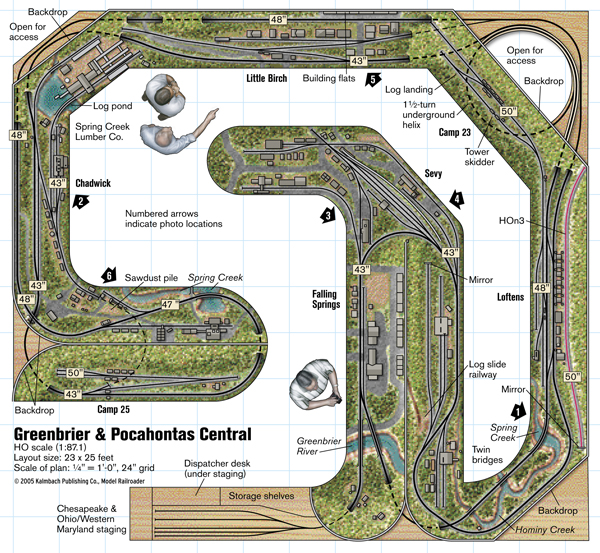
Track plan at a glanceName: Spring Creek Lumber Co. and Greenbrier & Pocahontas Central RRScale: HO (1:87.1)Size: 23′-0″ x 25’0″Theme: Depression-era eastern logging operation and common carrier railroadPeriod: summer 1934Mainline run: 112 feetMinimum radius: 22″ main, 18″ sidingsMinimum turnout: no. 4Maximum grade: 5 percentOriginally appeared in the August 2005 issue of Model Railroader.Click on the […]
Read More…
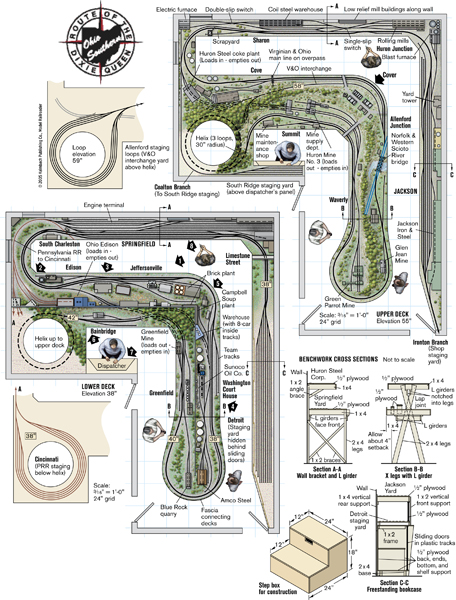
Track plan at a glanceName: Ohio SouthernScale: HO (1:87.1)Size: 22 x 28 feet (L shaped)Prototype: Detroit, Toledo & Ironton RRPeriod: early 1970sStyle: double deck with a helix connecting levelsMainline run: 220 feetMinimum radius: 30″Minimum turnout: no. 5Maximum grade: 2.8 percentOriginally appeared in the September 2005 issue of Model Railroader.Click on the link to download a […]
Read More…
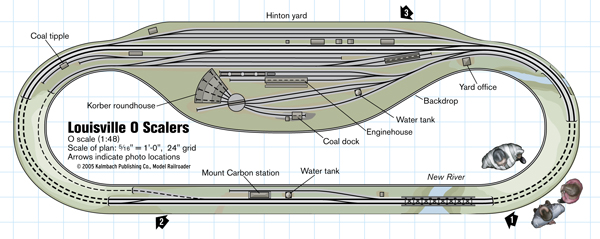
Track plan at a glanceName: Louisville O ScalersScale: O (1:48)Size: 15 x 45 feetPrototype: Chesapeake & OhioEra: 1950-1953Style: modularMainline run: 120 feetMinimum radius: 72″Minimum turnout: no. 6Maximum grade: noneOriginally appeared in the July 2005 issue of Model Railroader.Click on the link to download a PDF of this track plan […]
Read More…
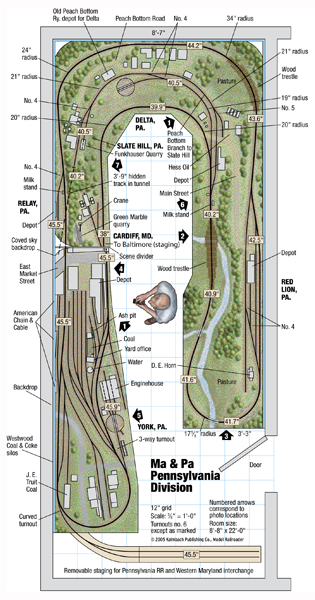
Track plan at a glanceName: Pennsylvania Division of the Maryland & Pennsylvania RRScale: HO (1:87.1)Size: 8′-8″ x 22′-0″Prototype: Ma & Pa RRPeriod: 1946Style: walkaround shelfMainline run: 97 feetMinimum radius: 17.25″Minimum turnout: no. 4Maximum grade: 2 percentOriginally appeared in the December 2005 issue of Model Railroader. Also appeared in 102 Realistic Track Plans. Click on the […]
Read More…
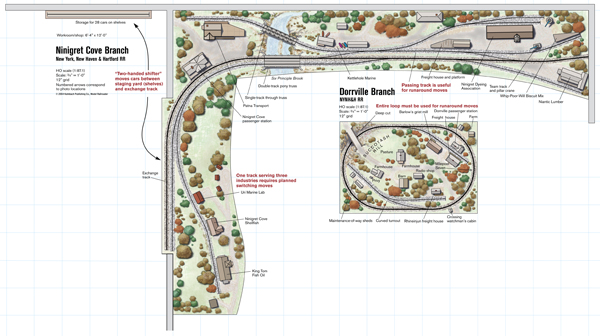
Track plan at a glanceName: Ninigret Cove BranchScale: HO (1:87.1)Size: 15 x 11 feetPrototype: New York, New Haven & HartfordTheme: small-town freightPeriod: around 1960Style: L-shaped shelfMinimum radius: 38″ (scale 4″ superelevation)Minimum turnout: no. 6, no. 8 crossoversMaximum grade: 2 percent (on the lumber siding)Originally appeared in the September 2004 issue of Model Railroader. Also appeared […]
Read More…
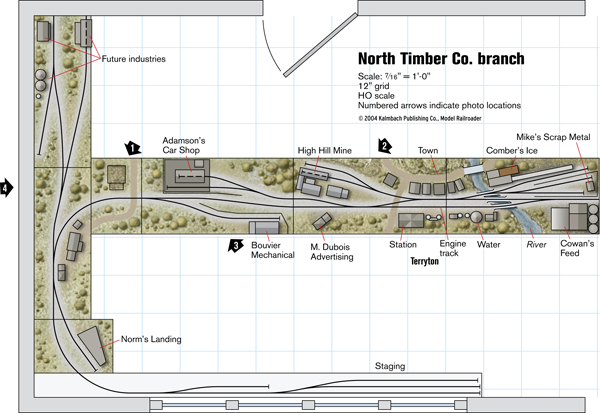
Track plan at a glanceName: Northern Timber Co.Scale: HO (1:87.1)Size: 10 x 16 feetPrototype: free-lancePeriod: 1935 to 1940Style: around-the-walls and peninsulaMinimum radius: 26″Minimum turnot: no. 4Maximum grade: 1.5 percentOriginally appeared in the September 2004 issue of Model Railroader.Click on the link to download a PDF of this track plan […]
Read More…
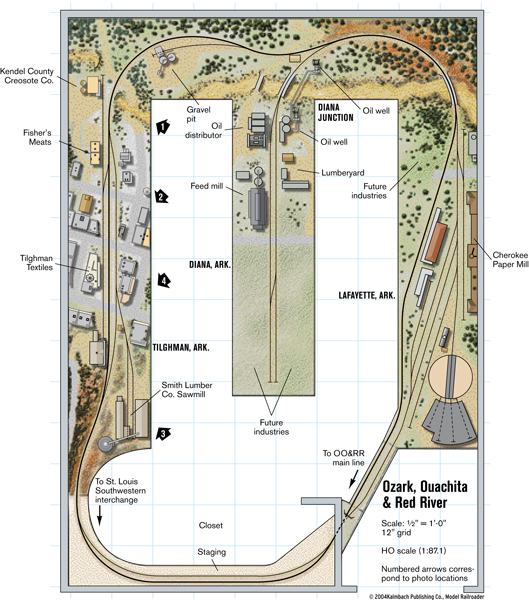
Track plan at a glanceName: Ozark, Ouchita & Red RiverScale: HO (1:87.1)Size: 10 x 14 feetPrototype: free-lancedPeriod: 1940s-1950sStyle: walk-inMainline run: 39 feetMinimum radius: 24″Minimum turnout: no. 4Maximum grade: noneOriginally appeared in the April 2004 issue of Model Railroader. Also appeared in 102 Realistic Track Plans.Click on the link to download a PDF of this track […]
Read More…
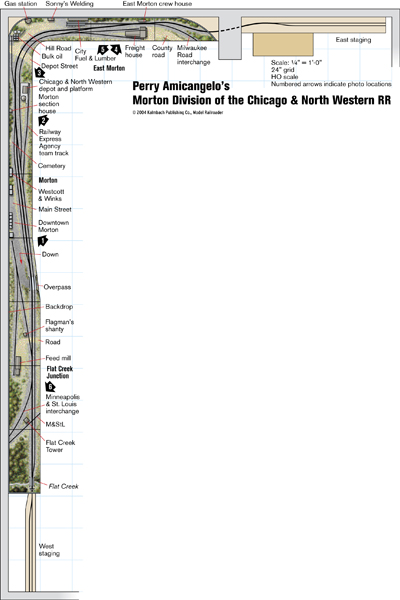
Track plan at a glanceName: Morton DivisionScale: HO (1:87.1)Size: 24 x 36 feetPrototype: Chicago & North Western Ry.Period: late 1950sStyle: linear, walkaroundMainline run: 38 feetMinimum radius: 24″Minimum turnout: no. 6Originally appeared in the September 2004 issue of Model Railroader.Click on the link to download a PDF of this track plan […]
Read More…
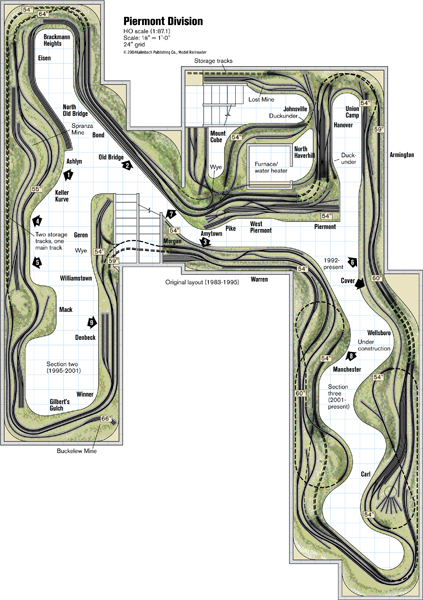
Track plan at a glanceName: Piermont DivisionScale: HO scale (1:87.1)Size: 57 x 72 feetPrototype: free-lanceEra: 1945 to 1955Style: around-the-wallsMainline run: 1,380 feetMinimum radius: 36″Maximum grade: 2 percent main line, 4 percent coal mineOriginally appeared in the February 2004 issue of Model Railroader.Click on the link to download a PDF of this track plan […]
Read More…
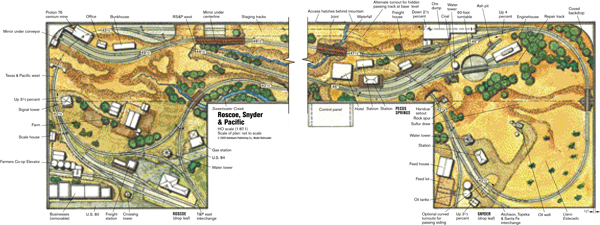
Track plan at a glanceName: Roscoe, Snyder & PacificScale: HO (1:87.1)Size: 4 x 13 feetPrototype: RS&PPeriod: 1930sStyle: sectionalMainline run: 33′-3″Minimum radius: 18″Minimum turnout: no. 4Maximum grade: 4 percentOriginally appeared in the August 2005 issue of Model Railroader.Click on the link to download a PDF of this track plan […]
Read More…
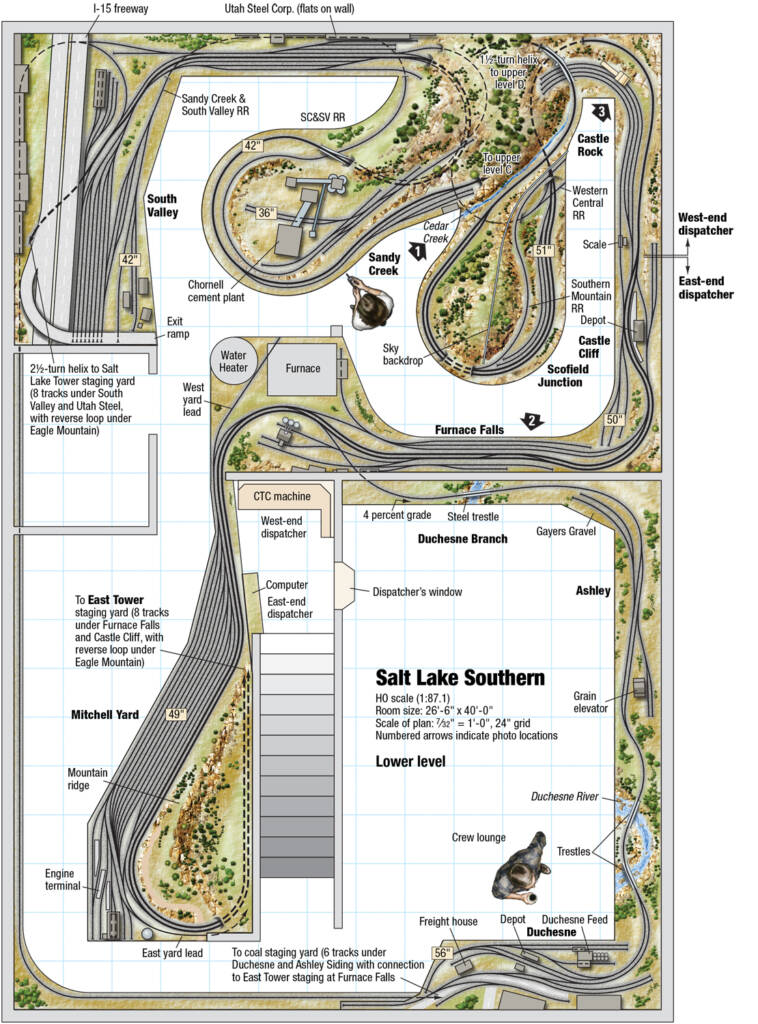
Track plan at a glance Name: Salt Lake Southern Scale: HO (1:87.1) Size: 26′-6″ x 40′-0″ Prototype: freelanced and Chicago & North Western Period: 1995 Style: double deck with helixes Mainline run: 325 feet Minimum radius: main line, 30″; branch line 22″ Minimum turnout: main line no. 6, branch line no. 4 Maximum grade: 2.75 […]
Read More…
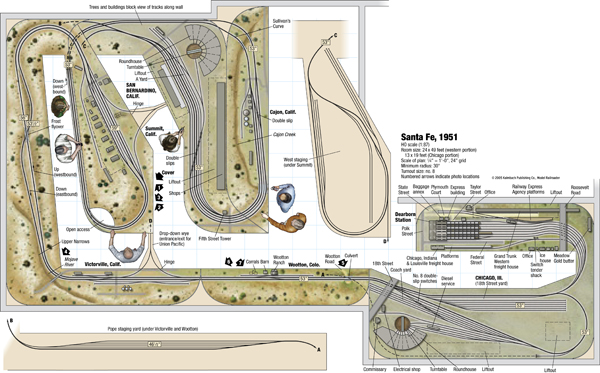
Track plan at a glanceName: Santa Fe, 1951Scale: HO (1:87.1)Size: 24 x 49 feetPrototype: Atchison Topeka & Santa Fe Ry.Period: August 29, 1951Style: walkaroundMainline run: 150 feetMinimum radius: 30″Minimum turnout: no. 8Maximum grade: 2.5 percentOriginally appeared in the October 2005 issue of Model Railroader.Click on the link to download a PDF of this track plan […]
Read More…












